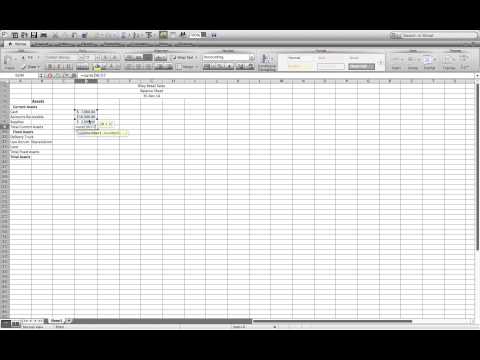
Reconciliation of bank statements is the process of comparing the transactions recorded in the company’s accounting records with the transactions listed on the bank statement. This process involves matching the amounts and dates of each transaction to ensure that they are consistent across both sets of records. A company prepares a bank reconciliation statement to compare the balance in its accounting records with its bank account balance. A bank reconciliation statement is a valuable internal tool that can affect tax and financial reporting and detect errors and intentional fraud. Business free resources for nonprofits owners regularly compare their records with bank transactions to ensure there are no errors. It is a best practice that enables them to check that their balance sheet numbers are accurate and match the bank statement.

The bank statement and the company’s records now both show a $6,975 balance. Reconciliation reports provide a summary of the reconciliation process and help to identify any errors or discrepancies. Failing to review these reports regularly can lead to errors in the reconciliation process. Starting with an incorrect opening balance can lead to errors in the reconciliation process. It’s essential to ensure that the starting balance is accurate before beginning the reconciliation process.
Record To Report
A bank reconciliation statement can help you identify differences between your company’s bank and book balances. A bank reconciliation statement is produced after comparing the cash balance on a balance sheet to the corresponding balance on the bank statement. This act of reconciliation helps to identify whether accounting changes need to be made. Bank reconciliation accounting is performed by the accounts payable department. It’s a means of comparing bank statements against a company’s personal records to spot any discrepancies, mistakes, cash manipulations, or fraudulent charges. How you choose to perform a bank reconciliation depends on how you track your money.
- After adjusting the balances as per the bank and as per the books, the adjusted amounts should be the same.
- Outstanding checks are those that have been written and recorded in the financial records of the business but have not yet cleared the bank account.
- Once you’ve identified all the items that align between the two records, it’s time to account for any discrepancies.
- Such information is not available to your business immediately, so you record no entry in the business’ cash book for the above items.
How often should you reconcile your bank account ?
This means that the check amount has not been deposited in your bank account and hence needs to be deducted from your cash account records. Outstanding checks are those that have been written and recorded in the financial records of the business but have operation and maintenance expenses definition not yet cleared the bank account. This often happens when the checks are written in the last few days of the month.
Whether this is a smart decision depends on the volume of transactions and your level of patience. When you “reconcile” your bank statement or bank records, you compare it with your bookkeeping records for the same period, and pinpoint every discrepancy. Then, you make a record of those discrepancies, so you or your accountant can be certain there’s no money that has gone “missing” from your business. When done frequently, reconciliation statements help companies identify cash flow errors, present accurate information to investors, and plan and pay taxes correctly.
Although fintech and automation are widely celebrated, there are still some accounting practices that need a keen set of human eyes. All of this can be done by using online accounting software like QuickBooks, but if you are not using accounting software, you can use Excel to record these items. Journal entries, also known as the original book of entries, refer to the process of recording transactions as debits and credits, and once these are recorded, the general ledger is prepared. These debits made by the bank directly from your bank account will lead to a difference between balances.
Know that banks might also make errors
You receive a bank statement, typically at the end of each month, from the bank. The statement itemizes the cash and other deposits made into the checking account of the business, as well as any expenses paid by the business. This includes everything from wages and salaries paid to employees to business purchases like equipment and materials. Bank statements also show expenses that may not have been included in financial statements, such as bank fees for account services.
Free Monthly Financial Reporting Template for CFOs
This is a simple data entry error that occurs when two digits are accidentally reversed (transposed) when posting a transaction. For example, you wrote a check for $32, but you recorded it as $23 in your accounting software. Since you’ve already adjusted the balances to account for common discrepancies, the numbers should be the same. To reconcile your bank statement with your cash book, you’ll need to ensure that the cash book is complete and make sure that the current month’s bank statement has also been obtained. Once you complete the bank reconciliation statement at the end of the month, you need to print the bank reconciliation report and keep it in your monthly journal entries as a separate document.
The statements give companies clear pictures of their cash flows, which can help with organizational planning and making critical business decisions. Accounting software enables a business to perform bank reconciliations on a more frequent basis. Bank transactions are automatically imported, giving staff the ability to match and categorize a large number of transactions with just the click of a button. The bank statement itemizes a company’s list of cash and other deposits made into the checking account of the business.
To quickly identify and address errors, reconciling bank statements should be done by companies or individuals at least monthly. They also can be done as frequently as statements are generated, such as daily or weekly. Non-sufficient funds (NSF) checks are recorded as an adjusted book-balance line item on qualified improvement property and bonus depreciation the bank reconciliation statement. For example, say ABC Holding Co. recorded an ending balance of $500,000 on its records. After careful investigation, ABC Holding found that a vendor’s check for $20,000 hadn’t been presented to the bank.